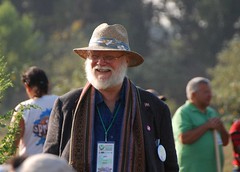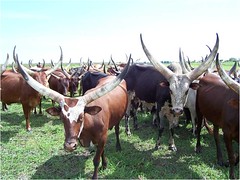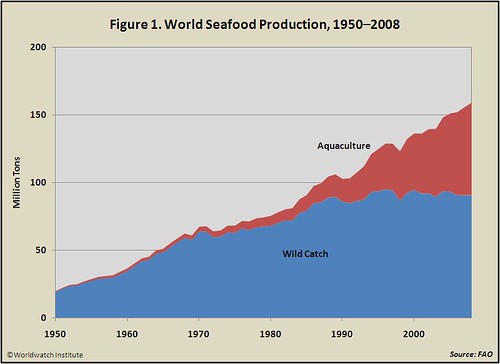In this regular series we profile advisors of the Nourishing the Planet project. This week, we feature John Jeavons, Executive Director of Ecology Action and Jake Blehm, Assistant Executive Director at Ecology Action in Willits, California. Cross posted from Border Jumpers, Danielle Nierenberg and Bernard Pollack.
 Name: John Jeavons
Name: John Jeavons
Affiliation: Ecology Action
Location: Willits, California
Bio: John Jeavons is the Executive Director of Ecology Action of the Mid-Peninsula, a 501 (c) (3) organization. He is known internationally as the leading researcher and method developer, teacher, and consultant for the small-scale, sustainable agricultural method known as GROW BIOINTENSIVE mini-farming. He is the author of the best-selling book How to Grow More Vegetables, Fruits, Nuts, Berries, Grains, and Other Crops Than You Ever Thought Possible On Less Land Than You Can Imagine (Ten Speed Press), which has gone into seven editions in seven languages, plus Braille. There are over 550,000 copies in print worldwide. He has authored, co-authored or edited over 30 publications on this high-yielding, resource-conserving Biointensive approach, including a five-part, peer reviewed article that appeared in The Journal of Sustainable Agriculture. Jeavons’ food-raising methods are being used in 141 countries and by such organizations as UNICEF, Save the Children, and the Peace Corps.
Name: Jake Blehm
Affiliation: Ecology Action
Location: Willits, California
Bio: Jake Blehm is the Assistant Executive Director at Ecology Action in Willits, California. Ecology Action has provided training and education in the GROW BIOINTENSIVE method of organic mini-farming to people from nearly 140 countries over the last 40 years. He has worked in sustainable and organic agriculture for over 25 years, working in over 30 countries and visiting an additional 20 countries for agricultural service-learning and education, volunteering with organizations such as ACDI/VOCA and Winrock International. He was worked in Bangladesh, Vietnam, Bulgaria, Mali, Ghana, Cambodia, Guatemala, Honduras and several other developing countries. He began his career as a biological control producer and consultant, and later moved into leadership and organizational development work with agriculturalists. He is an alumni of the California Agricultural Leadership Program, and was the Director of Programs for the California Ag Leadership Foundation. Before joining ecology action, he was Director of Operations at the Rodale Institute in Kutztown, Pennsylvania. Jake received his B.S. in Agricultural Business/Economics at Colorado State University, his M.B.A. in Organizational Development from California Lutheran University and a Certificate in International Management from the Thunderbird School of Global Management.
What is the relationship between agriculture and the environment? It very much depends on the type of agriculture practiced. The methods, practices, and inputs all affect our relationship with farming. Most conventional agricultural systems deplete natural resources and the environment’s ability to produce or maintain sustainable ecosystems on which all species depend. We need to change this relationship to a healthy one.
What role can agriculture play in alleviating poverty and hunger worldwide? For the majority of the world population, small-scale subsistence agriculture provides the only significant opportunity for addressing poverty and hunger while building sustainable fertility and conserving resources. Healthy and vibrant local agro-ecosystems with appropriately developed infrastructure and markets can provide food security and economic opportunity.
Can you describe how GROW BIOINTENSIVE practices work and how they can help improve the livelihoods of small-scale farmers? When properly used, the techniques included in GROW BIOINTENSIVE sustainable mini-farming can build the soil up to 60 times faster than in nature, while making possible per unit of production:
* 67 to 88% reduction in water consumption
* 50% reduction in the amount of purchased fertilizer required
* 94% to 99% reduction in the amount of energy used
* 100% increase in soil fertility, with an increases in yield
* 200% to 400% increase in caloric production per unit of area, and a
* 100% increase in income per unit of area.
What kinds of policy changes would you like to see implemented immediately to alleviate poverty and hunger? One good place to start would be to sequentially reduce crop subsidy payment programs. When the United States and European Union make farm subsidy payments, it changes commodity prices worldwide, and makes it very difficult for farmers from smaller developing countries to compete. These farmers are forced out of the market, and the U.S. or other G8 countries end up needing to provide food aid or other economic assistance. A better concept for agricultural support payments may be to pay farmers to build their soil fertility, sequester carbon, improve the soil’s water-holding capacity, reduce nutrient loading and develop better ecosystems. These would provide multiple benefits and everyone would win.
Can you discuss the relationship between consumers in the United States and global hunger? When consumers demand a food supply that is not fully sustainable, we support a farming model that depletes our soil and degrades water, air, and species biodiversity. This, in turn, decreases our ability to alleviate hunger and malnutrition. Why not support living, regenerative, local farming systems that support the improvement of the natural resources upon which the Earth depends?
Why should consumers in the United States care about the state of agriculture in other countries? Because a world with food security and social stability benefits us all.
What could be done to encourage more investment in an agriculture that assists with the alleviation of global poverty and hunger? A relatively small percentage of the developed world’s “security and defense” budget could provide the education, training, tools and other resources needed to increase food security, improved nutrition, healthy ecosystems and increased economic opportunity for hundreds of millions of people. It simply takes the courage and political will to begin the building of a more fully sustainable world that works for everyone.
In Candide, Voltaire points the way: “The whole world is a garden and what a wonderful place this would be, if only each of us took care of our part of the garden!” Each of us is needed. And building a truly sustainable agriculture is an essential part of building sustainable communities. In order to accomplish this, we need to shift our perspective. We need to stop growing just crops and begin growing living soil!
Photo Credit: Amy Melious
Thank you for reading! If you enjoy our diary every day we invite you to get involved:
1. Comment on our daily posts — we check for comments everyday and want to have a regular ongoing discussion with you.
2. Receive regular updates–Join the weekly BorderJumpers newsletter by clicking here.
3. Help keep our research going–If you know of any great projects or contacts in West Africa please connect us connect us by emailing, commenting or sending us a message on facebook.


 Name: John Jeavons
Name: John Jeavons For pastoralist communities like the well-known Maasai in Kenya, livestock keeping is more than just an important source of food and income; it’s a way of life that has been a part of their culture and traditions for hundreds of years.
For pastoralist communities like the well-known Maasai in Kenya, livestock keeping is more than just an important source of food and income; it’s a way of life that has been a part of their culture and traditions for hundreds of years. Fishing is a critical means of providing food, livelihood, trade, and economic growth in many developing countries-as well as the United States. In many small island developing nations and coastal countries – such as Bangladesh, Sierra Leone, and Ghana – fish provide at least 50 percent of the population’s total animal protein intake. And approximately 43.5 million people’s year-round incomes depend on fish production while another 4 million’s depend on seasonal jobs as fishers and fish product workers.
Fishing is a critical means of providing food, livelihood, trade, and economic growth in many developing countries-as well as the United States. In many small island developing nations and coastal countries – such as Bangladesh, Sierra Leone, and Ghana – fish provide at least 50 percent of the population’s total animal protein intake. And approximately 43.5 million people’s year-round incomes depend on fish production while another 4 million’s depend on seasonal jobs as fishers and fish product workers.
 The
The